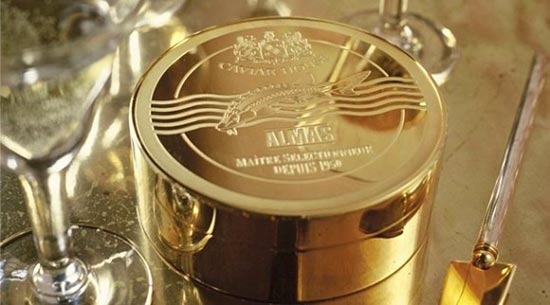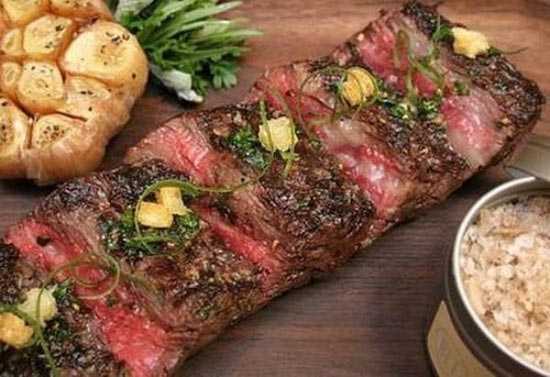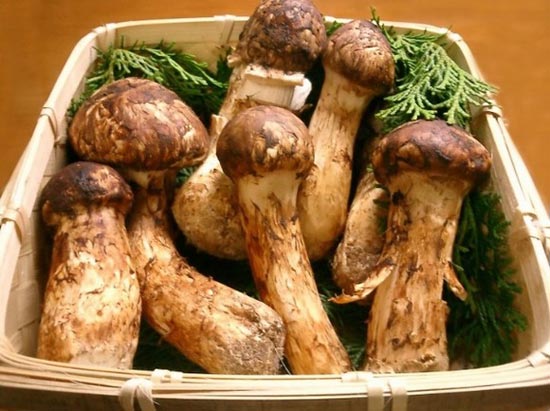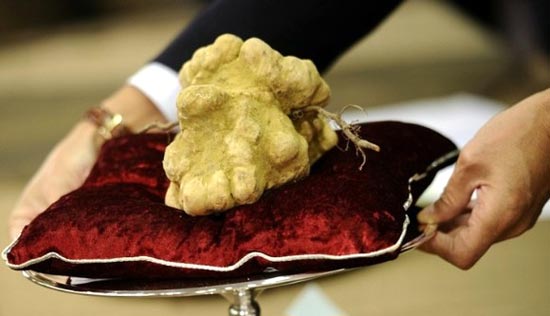1. Italian white Alba mushrooms - 160,406 USD/1.5 kg (about 3.4 billion VND)

These expensive mushrooms are known for their naturally pungent taste. They are difficult to grow, so they are considered a rare delicacy in dishes that require a spicy taste. A Hong Kong investor once bought a 1.51 kg Alba mushroom for more than $160,000, making it the most expensive mushroom in the world as well as the top luxury food.
2. Almas Caviar - 25,000 USD/box (about 530 million VND)

Almas Caviar is an extremely rare item from Iran. Caviar is already expensive, but Almas Caviar is even more expensive because of its scarcity. There is only one shop that currently sells this food: Caviar House & Prunier in Picadilly, London. Each kilogram of caviar is placed in a 24-karat gold tin and costs $25,000. If you just want to enjoy the taste, you can buy a small box for $1,250.
3. Yabari melon - 22,872 USD/fruit (about 486 million VND)

Although they look similar, these are not the regular melons you can find in supermarkets. Yabari melons are often sold only through auctions by customers who are so fascinated by the ideal sweetness of this melon. A wealthy businessman who owns many restaurant chains became famous when he successfully auctioned a Yabari melon for $22,872.
4. Densuke Black Watermelon - 6,100 USD/7.5 kg (about 130 million VND)

The Densuke Black Watermelon is a rare commodity grown only on the island of Hokkaido, Japan. Each harvest yields only a few dozen fruits. What makes this melon special and its sky-high price lies in its perfectly hard and sharp rind and its unparalleled sweetness. A melon weighing 7.5kg - 8kg costs around 6,100 USD.
5. Pizza Royale 007 by chef Domenico Crolla - 4,200 USD/piece (about 89.5 million VND)

Domenico Crolla is a Scottish chef famous for creating ingredients for pizza. He decided to create the Pizza Royale 007 based on the movie about the famous spy with lobster marinated in cognac, white fish soaked in champagne, Scottish smoked salmon... And the surface is sprinkled with 24-carat gold leaf. So the cake is only for display.
6. Samundari Khazana curry at Bombay Brassiere restaurant - 3,200 USD/serving (about 68 million VND)

As a way to celebrate the victory of the movie "Slumdog Millionaire", Bombay Brassiere (India) created a special curry just for the winner of the show "Who Wants to Be a Millionaire" including Devon crab, white mushrooms, Beluga caviar covered in gold leaf. There is also Scottish lobster covered in gold, abalone and lots of caviar.
7. Wagyu beef steak at Craftsteak restaurant - 2,800 USD/meal (about 60 million VND)

Wagyu beef is one of the most expensive foods in the world, with meat containing a high proportion of Omega-6 and Omega-3 fatty acids. This type of beef is raised in Kobe, Japan using special methods such as drinking beer, listening to music, and being massaged regularly to ensure peace. A Wagyu beef steak at Craftsteak restaurant, New York was once sold for $2,800. Unfortunately, this restaurant is now closed.
8. Thousand dollar omelet - Le Parker Meridien hotel - 1,000 USD/meal (about 21 million VND)

Omelettes are a common dish, but a restaurant called Norma at Le Parker Meridien Hotel in New York has created an extremely expensive omelet by adding lobster claws and 285g of Sevruga caviar to six eggs. The restaurant also serves miniature versions that are 1/10th the size for $100. The large version sells about 12 times, while the small version sells about 50 times a year.
9. Westin Hotel Bagel - 1,000 USD/piece (about 21 million VND)

At first glance, these loaves of bread look no different from regular bread, but the filling is made from Italian white Alba mushrooms - one of the most expensive foods in the world, goji berries and gold-leafed jelly cubes.
10. Matsutake mushrooms – 1,000 USD/kg (about 21 million VND)

Matsutake mushrooms, also known as mattaje, are the most expensive mushrooms in the world at the moment. This type of mushroom is found in Asia, North America, Europe, concentrated in China, Korea, the US, Finland, Canada, Sweden, but most in Japan. They are often sheltered under the layer of fallen leaves on the forest floor. Harvesting is very simple but finding them is very difficult.


































